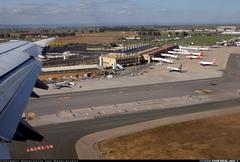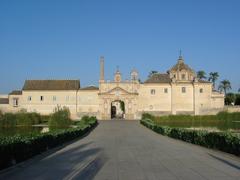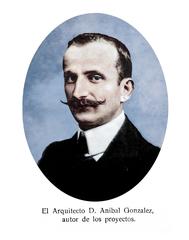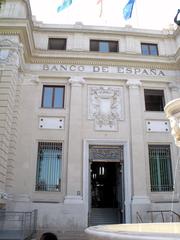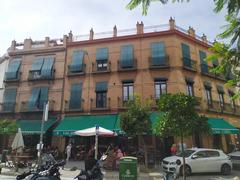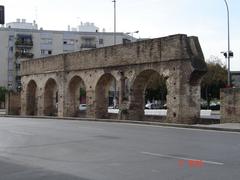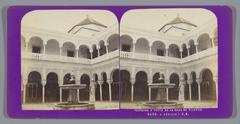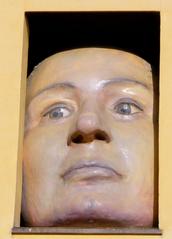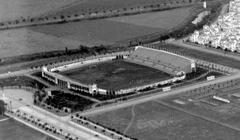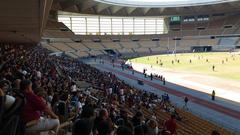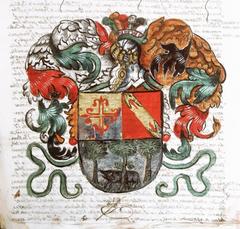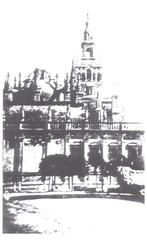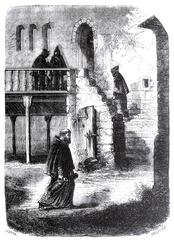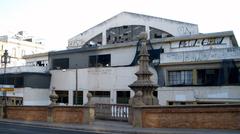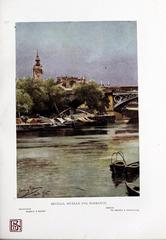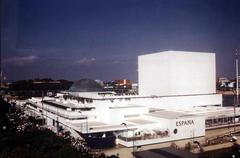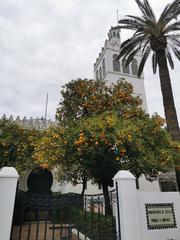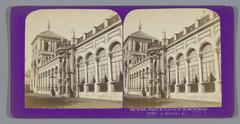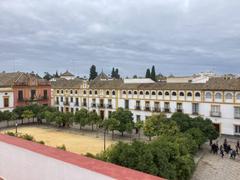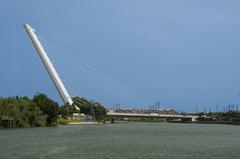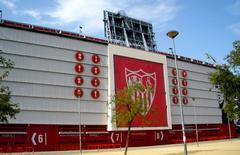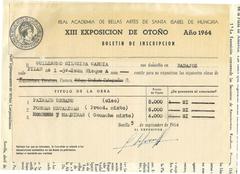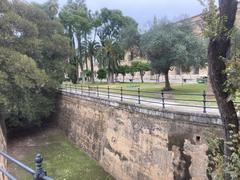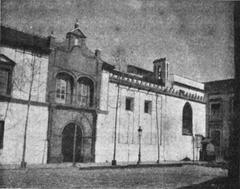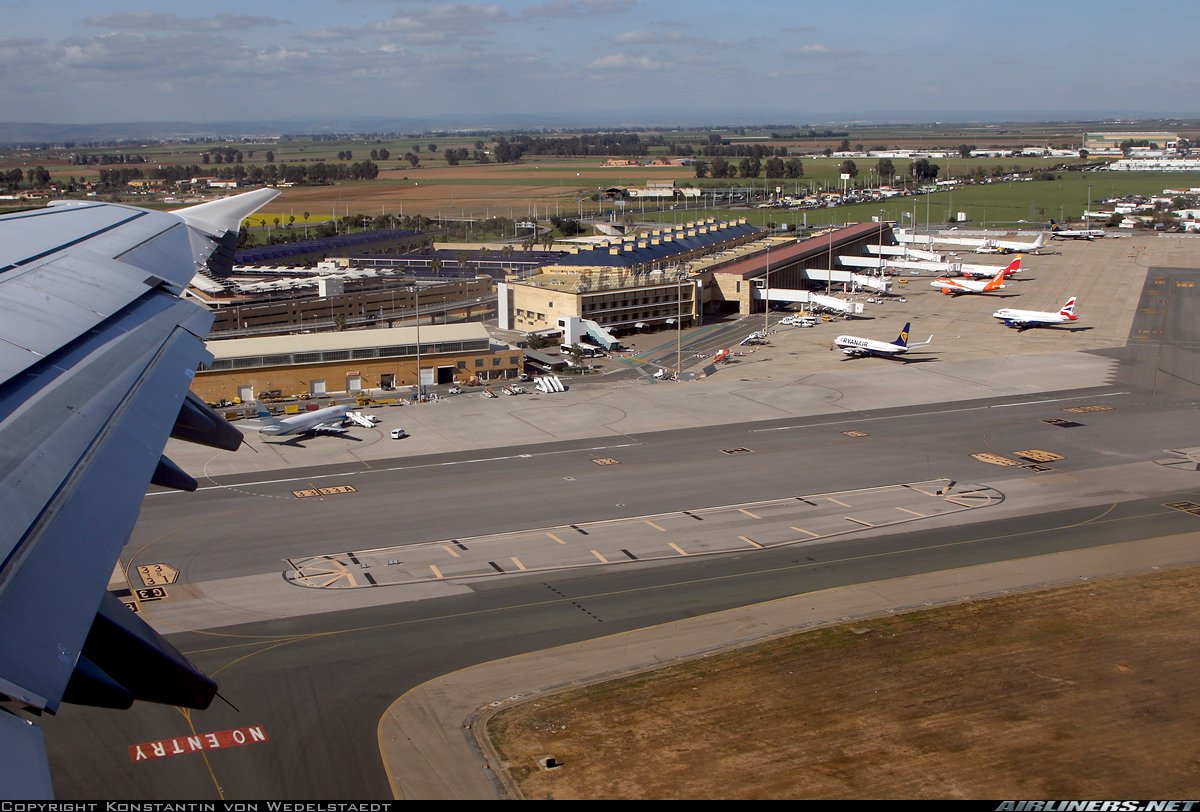
Visiting Terminal del Aeropuerto de Sevilla: Tickets and Hours Guide
Date: 03/07/2025
Introduction to Terminal del Aeropuerto de Sevilla
Seville Airport, officially known as Aeropuerto de Sevilla-San Pablo (IATA: SVQ), serves as a vital gateway to Seville and the wider Andalusian region. Renowned for its blend of modern aviation efficiency and architectural elegance rooted in local heritage, the airport connects millions of travelers each year to Spain’s vibrant south. Whether you’re arriving for business, leisure, or to explore Seville’s iconic sites like the Alcázar or Giralda Tower, this guide provides essential visitor information, practical travel tips, and insights into the airport’s history, design, and services.
Originally established during the Ibero-American Exposition of 1929, Seville Airport underwent a transformative renovation for Expo ’92. Architect Rafael Moneo’s vision introduced Andalusian and Moorish elements—horseshoe arches, blue azulejos, and sunlit vaulted ceilings—creating a space that is both functional and reflective of Seville’s identity. Recent expansions have further increased capacity and enhanced amenities, solidifying the airport’s status as a modern hub with excellent connectivity throughout Europe and North Africa.
The airport’s proximity to Seville’s historic center makes it an ideal starting point for exploring local attractions such as the Alcázar, Seville Cathedral, and Plaza de España. Comprehensive ground transportation, accessibility features, and passenger services ensure a seamless journey. For the latest updates, travelers are encouraged to consult official resources and consider using tools like the Audiala app for real-time information (Seville Airport Official; Miesarch on Rafael Moneo; Seville SVQ Airport Guide).
Table of Contents
- History and Development of Seville Airport
- Visitor Information
- Seville San Pablo Airport Terminal: Architecture and Attractions
- Complete Visitor Guide to Seville Airport
- Visiting the Giralda Tower: History and Visitor Info
- Summary and Tips for Visiting
- References and Further Reading
History and Development of Seville Airport
Early Origins (1929–1945)
Seville Airport’s roots trace back to 1929, when the Aeródromo de Tablada opened to support the Ibero-American Exposition. Initially serving postal and domestic passenger flights, it soon expanded to international routes, boosting Seville’s connectivity. The airport’s strategic importance increased during the Spanish Civil War and post-war years, culminating in a new transoceanic airport site in 1945, with expanded runways and navigational aids by 1948.
Expansion and Modernization (1950s–1980s)
Throughout the mid-20th century, the airport underwent significant growth. Runway extensions, new terminal facilities, and the installation of an Instrument Landing System (ILS) enhanced both capacity and safety. The original Tablada aerodrome transitioned to military use before closing in 1990, while the main airport became the region’s premier civil aviation hub.
Transformation for Expo ’92
In preparation for Expo ’92, Seville Airport was extensively renovated. Rafael Moneo’s new terminal design, completed in 1991, skillfully incorporated Andalusian motifs—such as horseshoe arches and blue tiles—establishing an architectural link between the airport and the city’s historical landmarks.
21st Century Growth
The opening of Terminal 2 in 2008 and further upgrades completed in 2022 have expanded capacity to 10 million passengers annually. In 2024, the airport set a new record with over 9 million travelers, reflecting its growing importance in European and North African air travel.
Visitor Information
Visiting Hours
Seville Airport operates 24/7, although terminal services typically run from early morning to late evening, aligning with flight schedules. For exact check-in times and services, consult the official airport website (Seville Airport Official).
Tickets and Airlines
Flight tickets are sold through airline websites and travel platforms, not directly at the airport. Major carriers include Vueling, Ryanair, and Iberia, offering flights to over 77 destinations across Europe, Spain, and North Africa.
Transportation
- Bus: Line EA connects the airport to Santa Justa train station and the city center.
- Taxi: Fixed fares to central Seville are available at taxi ranks outside arrivals.
- Car Rental: Agencies like Avis, Enterprise, Hertz, and others operate on-site.
- Private Transfers: Pre-booked options are popular for added convenience.
Accessibility
The airport is fully accessible, providing adapted restrooms, elevators, and dedicated assistance for travelers with reduced mobility. Advance notification to airlines or the airport is recommended for those needing special support.
Facilities and Amenities
- Free Wi-Fi throughout terminals
- Duty-free shops and local souvenir outlets
- Dining options featuring Andalusian and international cuisine
- VIP lounge and business services
- Lost & Found, baggage services, and medical care
Nearby Attractions
Seville Airport is conveniently located for visiting:
- The Alcázar of Seville
- Seville Cathedral and Giralda Tower
- Plaza de España
- Santa Cruz neighborhood
Its proximity to the Costa de la Luz also makes it a popular entry point for beachgoers.
Seville San Pablo Airport Terminal: Architecture and Attractions
The Terminal del Aeropuerto de Sevilla stands as a unique example of regional airport architecture. Designed by Rafael Moneo and opened in 1991, the terminal draws inspiration from Seville’s historic mosques and palaces (miesarch.com). Key features include:
- Material Palette: Warm tones from locally sourced concrete, yellow sand finishes, and blue-glazed tiles evoke the Moorish and Mudéjar traditions.
- Structural Motifs: Horseshoe arches and domed roofs bring a sense of grandeur and connect travelers to the city’s architectural legacy.
- Interior Details: Blue azulejos and vaulted ceilings maximize natural light, creating an inviting and airy ambiance.
- Landscaping: Orange and palm trees line the airport parking and entry areas, echoing Seville’s urban landscape.
The terminal’s layout separates arrivals (ground level) from departures (upper level), ensuring smooth passenger flows. Visitors can enjoy the architectural details as well as the convenient amenities.
Recognition: The terminal was nominated for the Mies van der Rohe Award in 1992 and underwent further renovations in 2022 to modernize facilities while retaining its original character (miesarch.com; Seville SVQ Airport Guide).
Complete Visitor Guide to Seville Airport
Terminal Layout and Facilities
- Arrivals (Ground Level): Baggage claim, customs, information desks, Lost & Found, medical services, and direct access to taxis, buses, and car rentals.
- Departures (First Level): 42 check-in counters, security, passport control, boarding gates (1–1A, 2–8, 9–11, K1–K4), VIP lounge, shops, and eateries.
Accessibility: Bilingual signage, elevators, ramps, and accessible restrooms cater to all travelers.
Distances:
- 5 minutes maximum walk from security to the farthest gate
- 3 minutes from arrivals to transport options
- Main car park (P1) is a 4-minute walk from the terminal
Operating Hours and Ticketing
- Terminal: 04:30–23:00 (summer), 05:30–00:00 (winter) (Sleeping in Airports)
- Ticketing: Airline counters sell tickets during operating hours; online booking is recommended for best prices and availability.
Passenger Services
- Dining: Starbucks, Burger King, and local cafés (note: none are open 24/7)
- Shopping: Duty-free and specialty shops
- Lounge: Sala VIP Azahar (fee applies; open 06:00–22:00)
- Wi-Fi: Free unlimited access
- Banking: ATMs available; limited currency exchange
- Medical: On-site first aid station
- Luggage: Trolleys available; no luggage storage at present
- Family: Baby changing rooms, family-friendly facilities
Ground Transportation
- Taxi: Fixed fare (~€25) to city center
- Bus: EA line to Santa Justa and city center every 20–30 minutes (€4 one way)
- Car Rental: Agencies on-site
- Parking: Short-term (P1) and long-term (P2), both a short walk from the terminal
Visiting the Giralda Tower: History and Visitor Info
One of Seville’s most recognizable landmarks, the Giralda Tower, originally a 12th-century minaret, now serves as the bell tower for Seville Cathedral. Its unique ramped ascent, ornate brickwork, and crowning statue “El Giraldillo” make it an architectural and historical treasure (Seville Cathedral Official).
Visitor Essentials
- Hours: 09:30–19:00 daily (last entry 18:30; hours may vary on holidays)
- Tickets: €10 general, €5 reduced (EU citizens 18–25), free for children under 12, residents, and on select cultural days. Combined with cathedral admission.
- Where to Buy: Online via the cathedral’s website or at the entrance.
Tours and Accessibility
- Guided Tours: Available in multiple languages; audio guides and private tours can be booked.
- Accessibility: The ramped climb is not suitable for all; the cathedral itself is wheelchair accessible.
Getting There
- Location: Plaza Virgen de los Reyes, Seville historic center
- Transport: Near Archivo de Indias tram stop; 10-minute walk from Puerta Jerez metro.
Photography and Tips
- Best Spots: Plaza del Triunfo, Calle Mateos Gago, and from the tower itself for panoramic city views.
- Visit Early or Late: To avoid crowds, especially during festivals.
Summary and Tips for Visiting
Seville Airport offers a seamless travel experience, uniting efficient operations with cultural and architectural flair. With a full suite of amenities, accessible services, and excellent transport links, the airport is the perfect introduction to Andalusia. Its location grants easy access to Seville’s most celebrated attractions, including the Alcázar, Cathedral, and Giralda Tower.
For optimal planning, consult the official airport website and consider using the Audiala app for real-time updates and exclusive travel tips. Whether you’re a first-time visitor or a returning traveler, Seville Airport’s distinctive blend of modernity and tradition ensures your Andalusian journey starts on an inspiring note (Seville Airport Official; Seville Cathedral; Miesarch on Rafael Moneo).
References and Further Reading
- Seville Airport Official Website, 2025, AENA
- Moneo, Rafael Architectural Work, 1991, Miesarch
- Seville SVQ Airport Guide, 2025
- Seville Cathedral Official Website, 2025
